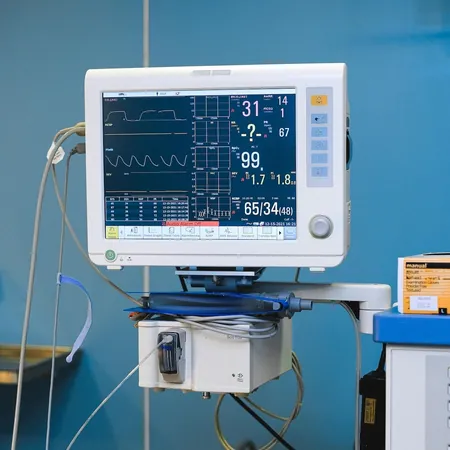
Revolutionary Combination Therapy: GLP-1s and SGLT2s Slash Mortality and Hospitalization Rates for Heart Failure Patients!
2025-07-26
Author: Wei
A Game-Changer for Heart Patients
In a groundbreaking new trial, patients grappling with atherosclerotic cardiovascular disease (ASCVD) and heart failure (HF) have shown remarkable improvements in survival and hospitalization rates when treated with a combination of GLP-1 receptor agonists (RAs) and SGLT2 inhibitors. This innovative pairing reveals a stark decrease in both one-year mortality and hospital admissions, painting a hopeful picture for those affected.
The Power of Combination Therapy
Previous studies have already highlighted the efficacy of SGLT2 inhibitors in reducing major adverse cardiovascular events among patients with ASCVD and HF. Meanwhile, GLP-1 RAs have emerged as potential allies in this battle. However, limited research has explored the combined effects of these two therapies—until now.
Dr. Sih-Yao Chen and his team from Chi Mei Medical Center emphasize the necessity of filling this knowledge gap. Their work aims to leverage the extensive TriNetX database to analyze the outcomes of patients treated with GLP-1 RAs alongside SGLT2is versus those given SGLT2is alone, focusing particularly on critical health indicators such as mortality and hospitalizations.
Dive Into the Data
The researchers conducted a retrospective observational study scrutinizing a significant pool of patients from August 2016 to September 2024. Eligibility criteria mandated that participants be over 18 years of age and have newly been prescribed either the combination of GLP-1 RA and SGLT2i or just the SGLT2i. Out of an initial pool of nearly 2.8 million patients, 96,051 were identified for the final analysis.
In this thrilling examination, 5,548 patients used both GLP-1 RAs and SGLT2is, while a staggering 90,503 were only on SGLT2is. Propensity score matching allowed for a balanced comparison, refining the groups to 5,272 participants each.
Stunning Results!
After following the subjects for a year, 2,162 from the combination cohort and 2,462 from the SGLT2i-only cohort were hospitalized or passed away—an astonishing finding. The risk for the combination group was significantly lower across all metrics. The risk of mortality (HR .72), hospitalization (HR .78), and heart failure events (HR .77) were markedly reduced, making a compelling case for this combination therapy.
Further analyses confirmed consistency in benefits across various subgroups, and these positive outcomes held up over two and three-year follow-ups. Negative control analyses indicated no discrepancies in comparison outcomes, reinforcing the findings.
A Beacon of Hope for Heart Failure Patients
Dr. Chen expressed optimism regarding these results, stating that "in today's healthcare landscape, coronary artery bypass surgery remains the only proven treatment to lower mortality rates in patients with ischemic cardiomyopathy. However, our study shines a spotlight on a potential new therapeutic avenue that could improve survival rates for those battling both ASCVD and HF." This groundbreaking research may very well pave the way for enhanced treatments in heart failure management.



 Brasil (PT)
Brasil (PT)
 Canada (EN)
Canada (EN)
 Chile (ES)
Chile (ES)
 Česko (CS)
Česko (CS)
 대한민국 (KO)
대한민국 (KO)
 España (ES)
España (ES)
 France (FR)
France (FR)
 Hong Kong (EN)
Hong Kong (EN)
 Italia (IT)
Italia (IT)
 日本 (JA)
日本 (JA)
 Magyarország (HU)
Magyarország (HU)
 Norge (NO)
Norge (NO)
 Polska (PL)
Polska (PL)
 Schweiz (DE)
Schweiz (DE)
 Singapore (EN)
Singapore (EN)
 Sverige (SV)
Sverige (SV)
 Suomi (FI)
Suomi (FI)
 Türkiye (TR)
Türkiye (TR)
 الإمارات العربية المتحدة (AR)
الإمارات العربية المتحدة (AR)